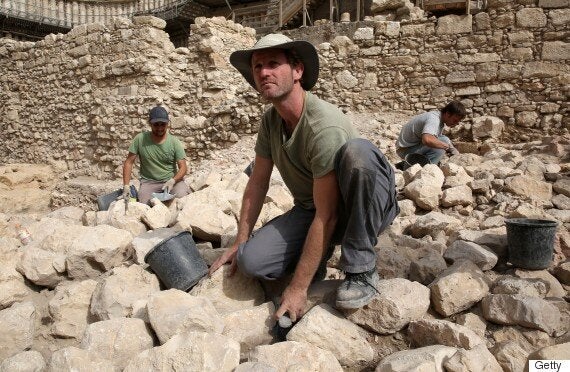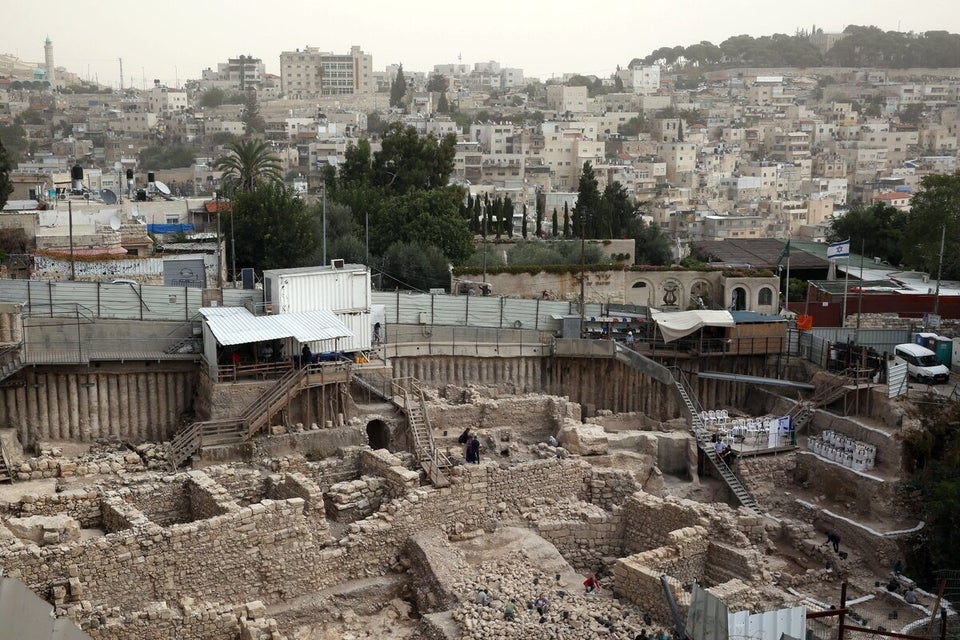A lost fortress, believed to be “one of Jerusalem’s greatest archaeological mysteries” has been found under a car park.
The remains of the ancient Greek fort of Acra were unearthed by a team of experts in the City of David National Park, Israel’s Antiquities Authority said.
The 2,000 year-old-ruins date back to the time of Antiochus IV Epiphanes, who constructed the stronghold after taking Jerusalem by force and enforcing its Hellenization.

Archaeologists believe they have found the remains of the Acra stronghold
Hellenic rule banned Jewish practices and rededicated the Jewish Temple until control was eventually wrested by the Jewish rebel army led by the Maccabees.
Findings within the ruin of the Acra citadel include lead sling shots, broze arrowheads and ballista stones, stamped with a trident, symbolising the rule of Antiochus.
Remains of section of a large wall, base of a tower and a glacis are also in evidence.
The Maccabees are considered heroes in both Judaism and Christianity, with the Jewish holiday of Hanukkah commemorating Mattathias and his five sons who revolted against the Hellenic rulers.
The mystery of the location of Acra has puzzled experts for well over a century, CNN writes, pointing out that both the Book of Maccabees and historian Josephus Flavius locate the fort within the City of David.
Indeed excavations at the car park site have been ongoing for more than a decade.
SEE ALSO:
- Who Could It Be? Alexander The Great-Era Skeleton 'Was A Mortal Worshipped By Society'
- Mesopotamian 'Moon God' Monument Older Than Stonehenge & The Great Pyramid Discovered In Israel
- Mystery Of Hundreds Of Yellow Orbs Found In Mexico's Temple Of The Feathered Serpent
The Israel Ministry of Foreign Affairs cites a statement from archaeologists, Dr. Doron Ben-Ami, Yana Tchekhanovets and Salome Cohen: "This sensational discovery allows us for the first time to reconstruct the layout of the settlement in the city, on the eve of the Maccabean uprising in 167 BCE.
“The new archaeological finds indicate the establishment of a well-fortified stronghold that was constructed on the high bedrock cliff overlooking the steep slopes of the City of David hill. This stronghold controlled all means of approach to the Temple atop the Temple Mount, and cut the Temple off from the southern parts of the city.
“The numerous coins ranging in date from the reign of Antiochus IV to that of Antiochus VII and the large number of wine jars (amphorae) that were imported from the Aegean region to Jerusalem, which were discovered at the site, provide evidence of the citadel's chronology, as well as the non-Jewish identity of its inhabitants."
